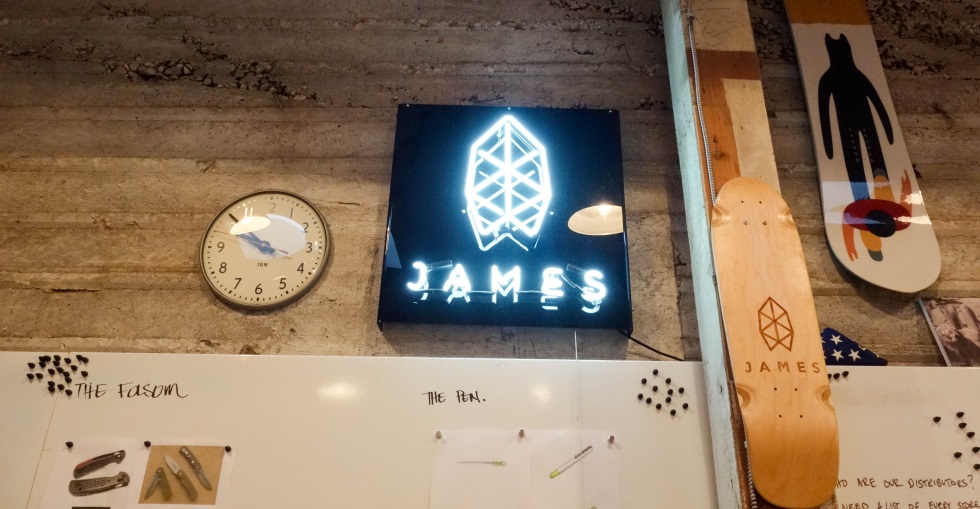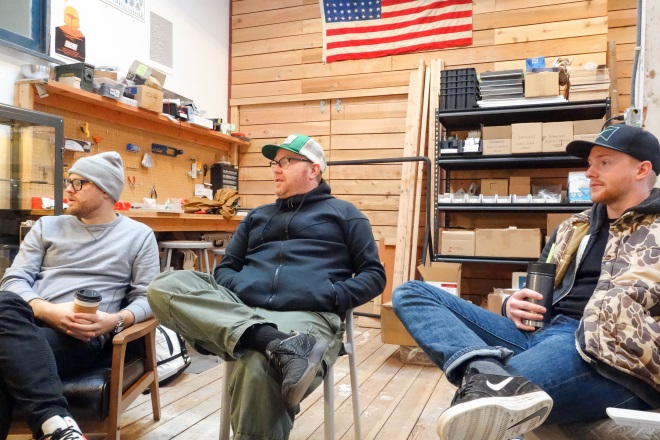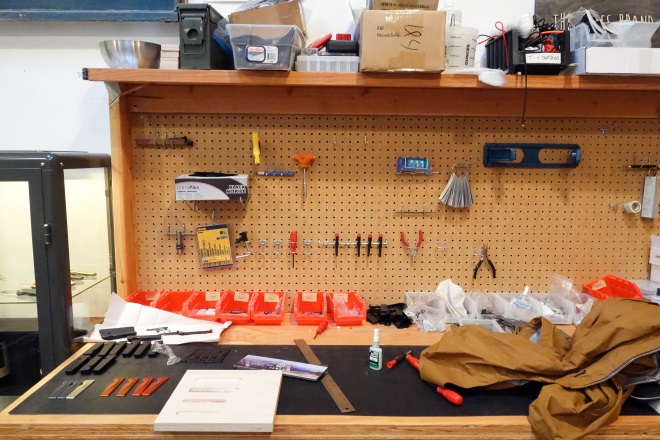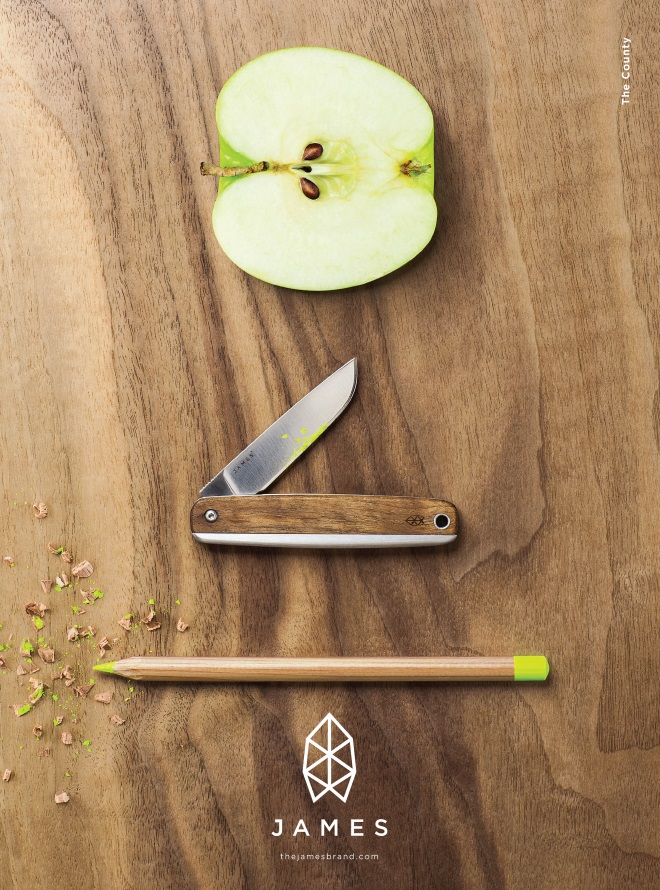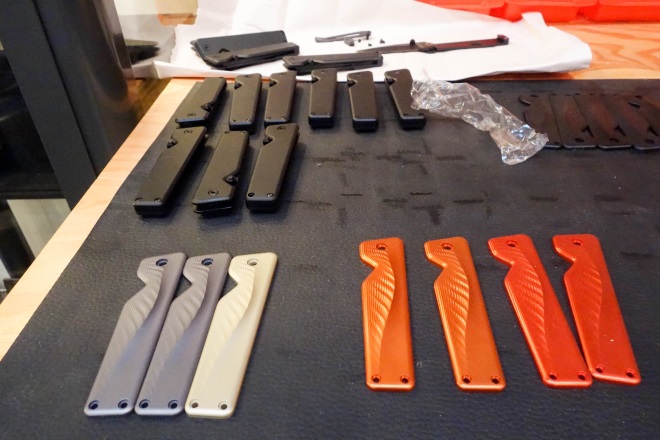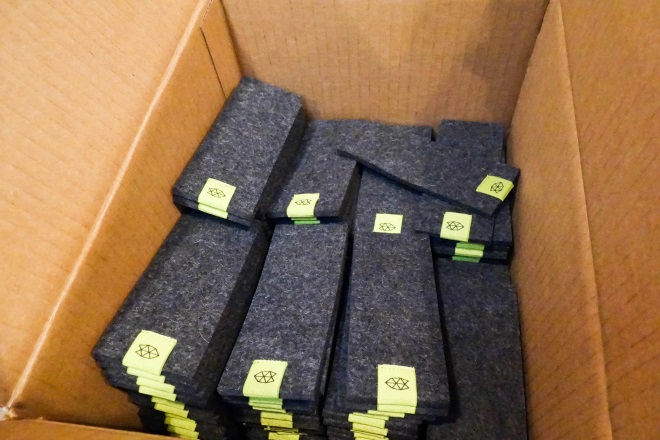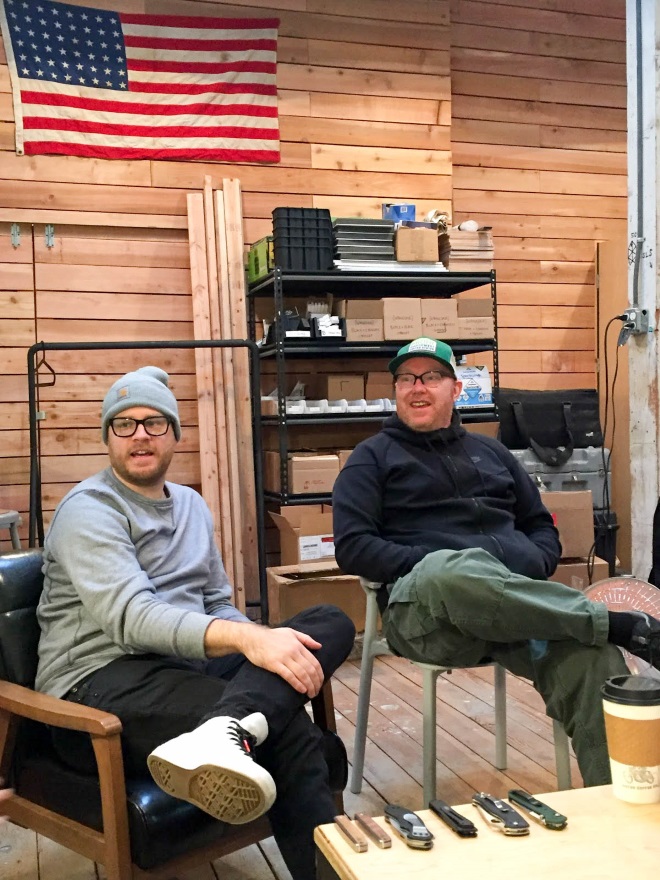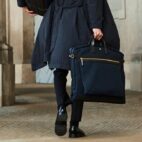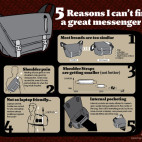The James Brand :: Studio Visit
What do you get when you start a company with design built into the foundation, instead of an afterthought or something you outsource a few times a year? What happens if you can control every step of a product from the choice of materials, to how and where it gets manufactured, and even the branding and packaging? That’s what I attempted to find out when I visited The James Brand on a dreary and wet day before Thanksgiving last Fall.
I knew I would be in Portland visiting some friends for the holidays and I reached out to Ryan Coulter to see if I could swing by and learn just what they were all about. I have been a fan of EDC and pocket knives most of my adult life and like many guys I know, have way more knives than I actually need. The James Brand is a newcomer to an industry that is filled with giants like CRKT and Kershaw (both of which are based in Portland), as well as plenty of small shops and independent makers. What makes three guys with backgrounds completely unrelated to the knife industry think they could pull off making a product people would actually want to know?
It took a while to find the shop, but Ryan came down and gave us much needed relief from the Oregon rains. Their shop is on the second story of a shared space, a giant old-looking warehouse that I’m sure holds some great stories. We were greeted by Sam Amis and Kevin Callahan, rounding out the trio that hold up the company. Fresh local donuts and coffee were offered and pleasantries exchanged, then we got down to business.
“Our target audience is people like us. Designers, skaters, surfers…“
Before we get further, I have to make a confession. I loved what I saw online from the brand, but I also read some criticisms about the products. I still remember feeling like I was on a mission that morning; I was going to get to the bottom of this. Ryan started off telling us about the inspiration for the brand. He grew up in Bloomington, Indiana and his parents moved the family to a farm and bought a book on how to live off the land. Mind you, the Coulters were not commercial or sustenance farmers by trade. His mom literally bought a DIY book, called How To Live On Almost Nothing And Have Plenty, on how to run a farm. He told us about how he remembered his mother always carrying a Swiss Army Knife around and how he, too, used a small pocket knife growing up.
Fast-forward a few decades, and both Sam and Ryan hold positions at Nike – Sam in the Innovation Kitchen and Ryan in various roles in Innovation, for the past nine years. They’ve always carried a knife with them but never felt like they could identify with the tactical imagery in the ads, or the hunt/fish lifestyle that the brands were trying to market to. Ryan said, “I remember when everydaycarry.com went from being tactical and really military driven to more everyday pocket dumps. I liked seeing what ordinary people like me were carrying.”
I asked the guys about who their knives are designed for. Sam answered, “Our target audience is people like us. Designers, skaters, surfers, creatives, city dwellers that love to escape that city when we can.” They pointed to their magazine ads hanging on the walls above us. The imagery is stunning and the messaging immediately hits you. A freshly cut apple. A lift ticket covered in snow. They casually mentioned a term that I was surprised I’d never heard of prior – practical not tactical. That says it all. That’s what The James Brand is all about.
“We also don’t think that ergonomics means ‘let’s put cutouts here and here, because that’s the shape of our fingers’…”
Once the guys got a little comfortable, I hit them with a one-two punch. First I asked about their choice of steels – D2 in the Chapter and Sandvik 12C27 in the County. They’ve taken some flack online about these supposedly lesser quality steels. Many were expecting better quality steels at this price point. Sam calmly explained that they picked metals that were durable, could keep a sharp edge, but could be user sharpened if something were to happen. They wanted their users to not be afraid of dropping a knife on a concrete floor. A high carbon steel like D2 might not hold an edge forever, but it’s serviceable and less brittle and prone to chipping.
Next, I wanted to know about their ergonomics. Where were the finger grooves? What about comfort? This time, Kevin chimed in. He joked that if an ergonomics specialist designed a wooden kitchen spoon, there would be molded grips on the handle. But, he asked, why is this necessary? Ryan and Sam agreed; when it comes to ergonomics, the guys wanted to produce knives that are comfortable to hold and safe to use. Think about the times you’ve cut something with your pocket knife. How long does it take to open a package or cut a piece of rope?
“We’re still learning.”
Does that mean that The James Brand will always stick to only certain types of steel, and never with a nod towards ergonomics? Of course not. As Sam said, “We will have more ‘ergo friendly’ knives in the future, and the Folsom is an example of that direction, but we also don’t think that ergonomics means ‘let’s put cutouts here and here, because that’s the shape of our fingers’ – that aesthetic isn’t great either.”
When asked what sets them apart from traditional makers, they pointed to the fact that they started off as designers and controlled the whole experience, beginning to end. They’ve been quoted as saying that they think their packaging (honestly, it’s some of the best I’ve seen for a blade), might be more important than the knife. Since they are such a small outfit, they are able to really dial in that user experience and brand image. And the fact that they are approaching this [knifemaking] from an outsider’s point of view, gives them a competitive advantage. They don’t have any preconceived notions of how a knife should look or feel.
“They wanted their users to not be afraid of dropping a knife on a concrete floor. A high carbon steel like D2 might not hold an edge forever, but it’s serviceable and less brittle and prone to chipping.”
I walked away having my mind changed from being slightly unsure about these guys, to being completely on board with their approach and philosophies. I think what really did it was how easy it was to identify with them. A few days later, while looking back at the shop visit, I remembered Ryan saying a three-word phrase that really showed The James Brand’s DNA – we’re still learning. They’ll be the first to admit that they aren’t experts at this. They aren’t metallurgists or experts in blade geometries. But, they are getting there. They saw a void in the market and they are doing their best to put out knives that the James in all of us would be proud to carry and use.





 Carry Awards
Carry Awards Insights
Insights Liking
Liking Projects
Projects Interviews
Interviews
